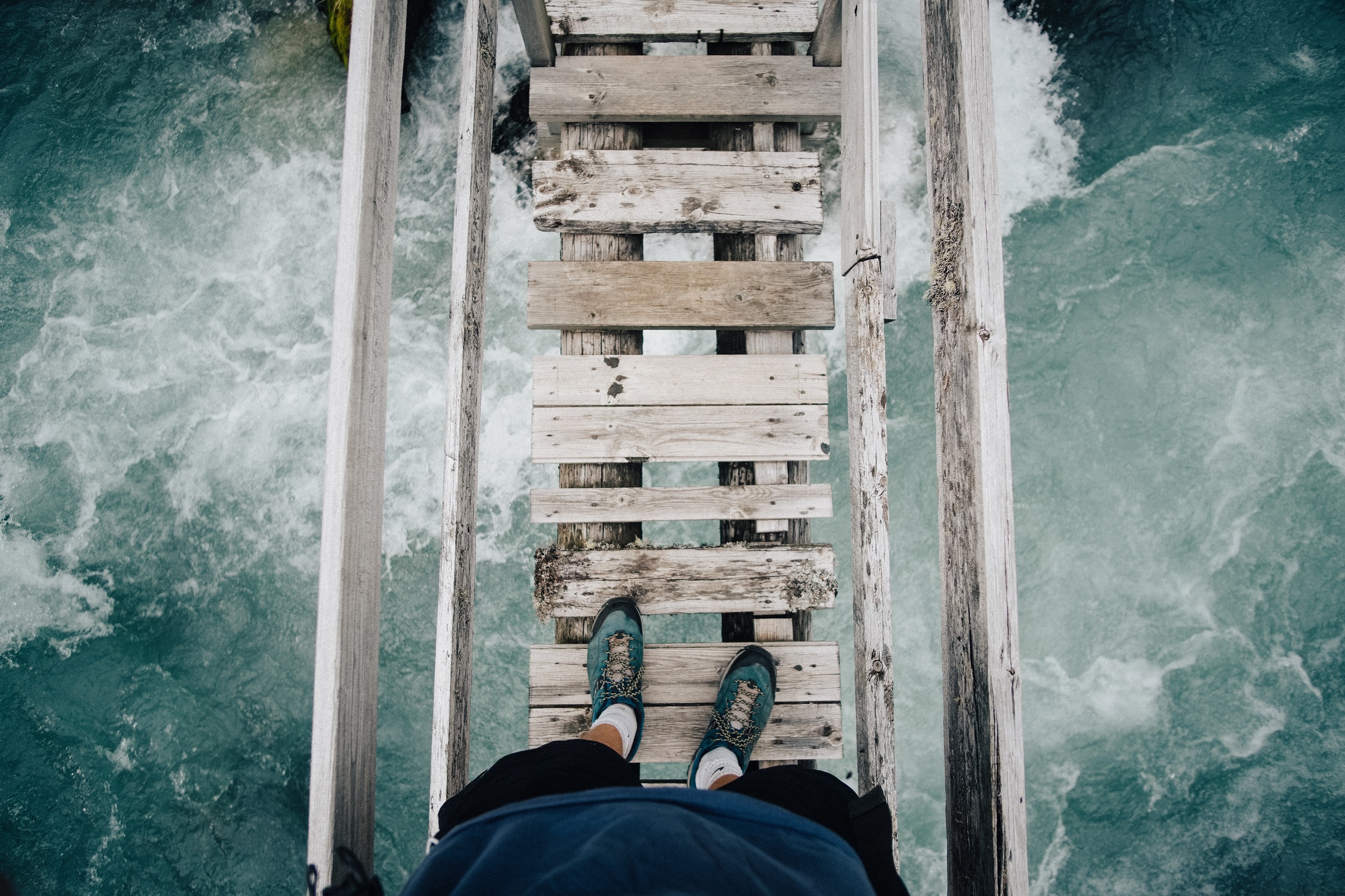Being brave when it counts

Photo by Benjamin Davies - Accessed on Unsplash
When I was a kid, I was terrified of quicksand.
In all the old adventure stories and serials I’d read and listen to, there’s always a moment when the hero takes one wrong move and their fate is almost sealed. They’re sinking slowly into a natural death trap, where their panic and fear only exacerbates the danger they’re in.
The idea of quicksand quickly invaded and found roost in the darkest recesses of my imagination: nightmares and anxieties about taking a step, going to lift my foot, and finding it frozen in place, unable to move as my form leisurely is resigned to its final resting place.
Surprisingly, quicksand has rarely been a problem over the course of my adult life.
With all the mental anguish I put myself through and the sleepless nights waking up in a cold sweat from a nightmare, you’d think I’d have found at least a couple quicksand traps to navigate and avoid.
Maybe on the way to work, step around it coming off of the train.
Deftly springing across a pool of the murky stuff on the way to a job interview, maybe swinging from a vine like the serials I once obsessed over.
No, the perils of adult life are much more inscrutable. Despite the fact a job interview has no chance to pull me under and sink me to the depths of the earth; I’ve more sleepless nights over them in my adult life compared to quicksand.
It’s interesting to think about what made us scared as children, compared to the anxieties we experience in day-to-day life. When we reminisce, we think of ourselves as being carefree in youth. But we all had our own fears.
Maybe you were afraid of the dark. Maybe the loud creeks of the house settling filled you with dread; the scratching of a long tree branch against the siding of a house conjuring up images of witches or vampires or ghouls.
But those fears often give way. We grow older and become anxious about tests and exams, or asking a cute person out on a date.
Then, we grow older and again, our fears change: mortgages, the price of gas, are our children safe and happy.
In comparison, our childhood fears might seem silly or even ridiculous. However, the manner in which we face our fears is the exact same. It’s important for us to remember this.
For example, take quicksand — the object of my ire and anxiety decades ago. How do you solve that problem?
Well, the first thing you’d think to do is avoid it. No one purposefully walks into quicksand. By paying attention to where you’re stepping, you’re sure to solve that problem before it begins, right?
Now I’d have to picture young David, looking feverishly around the playground, refusing to take a step into the sandbox, lest he start to sink.
If we focus too much on the idea of our fears and use all our energy to avoid frightening situations, not only will we be drained by a mental state of constant anxiety but we’ll also often miss out on exciting opportunities and challenges.
I know we all have that memory of the person we adored in High School and still kick ourselves in the butt over not talking to them, not asking them out or not leaning in for that kiss.
This is not to say we should leap without looking or considering consequences.
But there’s a fine line between being reckless and being afraid. Neither will serve you. In fact, if you let yourself be consumed by your anxieties and fears, you will end up serving them.
We cannot avoid what we fear forever. Sometimes, we will have to face them. And what to do then, when what we’ve been dreading happens?
Well, I think back to the hapless adventurers in quicksand. What’s the worst thing you can do?
Panic. Struggle. Attempt to free yourself. These actions not only will do nothing to help, but they will only hasten quicker sinking, and following that, more panic.
It becomes an endless waltz of three steps: panic, struggle, sink; panic, struggle, sink.
Then what is an adventurer to do?
The first and most important thing to do is take a deep breath. Catch it and hold it, and in that moment, things will become clearer to you.
You’ll start to see different solutions and options you may not have noticed before. Maybe a nearby vine— like a close friend you can count on — just waiting to be reached out for.
And if you don’t think you have anyone you can reach out towards, look again. Our fear can create terrible blind spots, cloud our vision and make us think that we’re alone.
But the world is filled with wonderful, decent human beings who have all too well felt the icy grasp of fear chill their spine. They will help you if you’re brave enough to reach out.
Sometimes bravery isn’t leaping over dangerous traps or standing up to the witch outside our door. Bravery doesn’t have to be confronting the darkness of our room, with only a stuffed animal to keep us company.
Sometimes bravery is in admitting that you’re close to being in over your head on this adventurer we call life. And sometimes reaching for the phone, grabbing for that lifeline, and asking for help is the bravest thing we can do.
